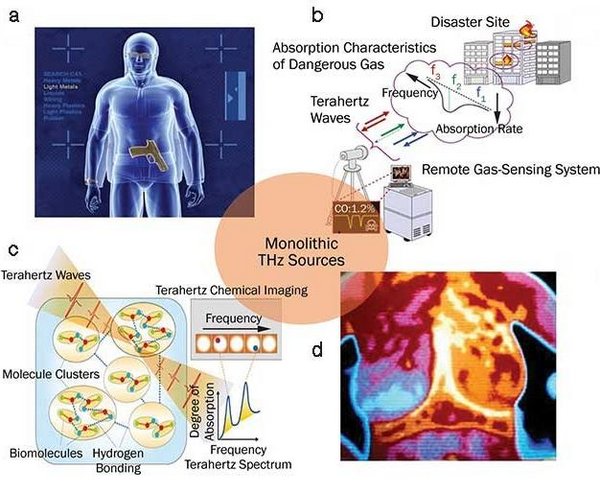
We develop integrated sensing systems for measuring complex structures at a distance, using electromagnetic radiation.
Vision and remote sensing with electromagnetic waves underpin any human activity and play a key role in medical diagnostics, security, and autonomous driving. While conventional 2D imaging in the visible range provides limited compositional information only on the surface of objects, advanced imaging and sensing methods have been developed, which use a broader spectral range (infrared and THz) and include depth information (e.g. coherence tomography, LIDAR). These approaches provide quantitative information on chemical composition, allow “seeing” inside opaque structures and bodies, and produce real-time 3D images of a scene. Their practical application is however hindered by the complex set-ups needed to generate, control, and detect electromagnetic waves with the required properties. Integration of these systems on a chip is the next challenge.
In this focus area we aim at creating the building blocks for on-chip remote sensing and integrating them in functional systems. A main goal is the development of novel devices for the generation, control and detection of THz waves, for the detection of small particles or analytes (down to the single-molecule level), gas sensing, cancer imaging and detection. In a second research line, we explore photonic circuits for near-infrared 3D imaging, at scales ranging from few µm to >100 m, relying on phase coherence (coherent LIDAR, optical coherence tomography). Dense integration and low power consumption will be major targets, aiming in some cases at battery-powered operation, which can be used, for example, in diagnostic pills.
This research is based on the leading technology base in photonic integrated circuits and a strong foundation in THz science and technology, including THz microscopy. Collaboration with large industrial players in the healthcare and automotive application areas, and valorisation through spin-offs will be actively pursued.